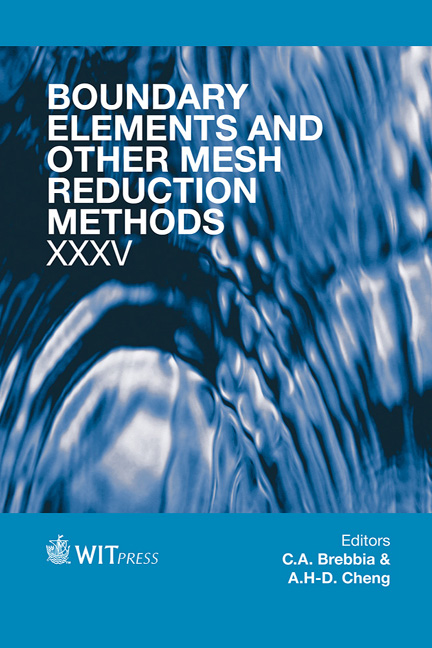BEM Formulation Based On Dipoles Of Stresses Applied To Crack Growth Modelling In Quasi-brittle Materials
Price
Free (open access)
Transaction
Volume
54
Pages
12
Page Range
187 - 198
Published
2013
Size
599 kb
Paper DOI
10.2495/BEM130181
Copyright
WIT Press
Author(s)
H. L. Oliveira & E. D. Leonel
Abstract
Fracture mechanics and crack propagation problems have been widely studied by the scientific community in recent years, because crack growth phenomenon can explain the failure of structures. In order to model accurately the structural behaviour of complex engineering structures, including complex geometries and boundary conditions, numerical techniques are required. In this regard, the boundary element method (BEM) has been widely used to solve complex engineering problems, especially those where its mesh dimension reduction includes advantages on the modelling. This paper addresses the analysis of crack propagation in quasi-brittle materials using an alternative BEM formulation. In this type of problem, the damaged zone ahead of the crack tip is modelled based on the fictitious crack model. Therefore, the residual resistance of the damaged zone is represented by cohesive stresses, which tends to close the crack faces. The alternative BEM formulation proposed aims at modelling the cohesive stresses using the domain term of the direct integral representation. This term is modified, in order to be non null only at the fictitious crack path. As a result of the domain term manipulation, appears a dipole of stresses, which will govern the cohesive stresses. It leads a nonlinear formulation, where the cohesive stresses are determined according the crack opening displacement. In this paper, the nonlinear problem is solved using a tangent operator, which includes the nonlinear laws into the algebraic BEM equations. This operator is derived considering linear, bi-linear and exponential cohesive laws. The results achieved by the proposed formulation are compared with experimental and numerical results in order to validate and prove its robustness and accuracy. Keywords: tangent operator, dipoles of stresses, cohesive crack modelling.
Keywords
tangent operator, dipoles of stresses, cohesive crack modelling





